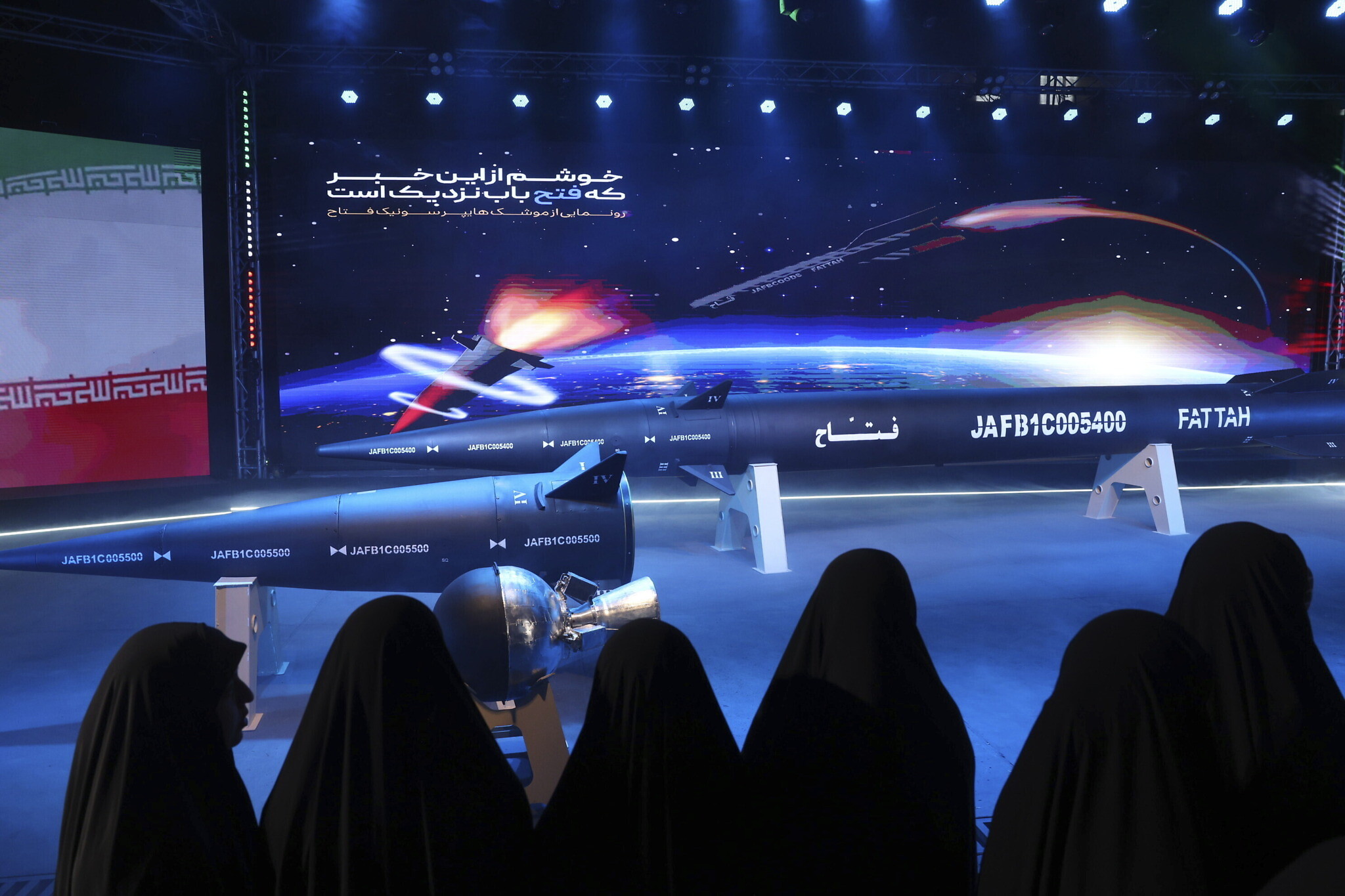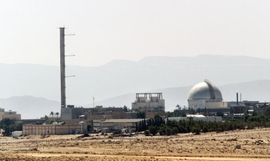The Islamic Revolutionary Guard Corps (IRGC) Aerospace Force unveiled its first domestically made hypersonic ballistic missile, Fattah.
Iranian President Ebrahim Raisi, Chief Commander of the IRGC Major General Hossein Salami and Commander of the IRGC Aerospace Force Brigadier General Amir Ali Hajizadeh attended the unveiling ceremony on June 6, Fars news agency reported.
The precision-guided missile has a two-stage solid fuel engine with a range of 1,400 km and a maximum speed of Mach 15 (18,522 km/hour) on impact.
The missile, produced by IRGC Aerospace Force specialists, can bypass and destroy air defense systems. It also features excellent maneuverability and stealth ability to pass through radar systems.
Fattah features a moveable secondary nozzle and uses solid propellants, allowing it to reach high speeds and "perform various maneuvers inside and outside the earth's atmosphere.
At the unveiling ceremony, Brig Gen Hajizadeh said "Fattah cannot be intercepted because it moves in different directions and flies at different heights".
He added that the missile can hit a speed of Mach 13, which makes it "impossible" to intercept.
Earlier, Brig Gen Hajizadeh announced that Iran successfully tested an advanced hypersonic ballistic missile and it will be unveiled soon.
The new missile can bypass all air defense missile systems and target the enemy’s anti-missile systems, and can maneuver both in and out the Earth’s atmosphere at a speed of around Mach 13, he said on May 29.
In late February, Hajizadeh said that the American military bases in the Middle East are "meat between [Iran's] teeth" and that the US Navy forces in the Indian Ocean, the Red Sea, and the Mediterranean are worthless because they are within the 2,000-kilometer range of Iran's missiles.
On May 25, Iran unveiled the new long-range ballistic missile "Kheybar" with a range of 2,000 km and can carry a warhead as heavy as 1,500 kg. This is the latest entry in the Khorramshahr family of ballistic missiles.
The Kheybar precision-guided missile can reportedly hit a speed of Mach 8 (around 9,541 km/h) when in Earth's atmosphere and Mach 12 (14,312 km/h) when it leaves the atmosphere.
Hajizadeh revealed some other features of Kheybar on May 29, saying "Only one missile is fired but when it reaches its target, it hits as many as 80 targets at one time. It means that, if we fire 80 missiles of this variant, as many as 8,000 targets are hit in the enemy's lands," he said.
Hypersonic missiles can fly at least five times faster than the speed of sound and on a complex trajectory, which makes them difficult to intercept.
Western governments worry that satellite launch systems incorporate technologies interchangeable with those used in ballistic missiles capable of delivering a nuclear warhead, while Iran has always denied this. They are particularly concerned because the UN Security Council resolution 2231, which restricts missiles and related technologies, is effective until October 2023.







 The Mine Action Agency of Azerbaijan (ANAMA) reported on Thursday the discovery of a significant amount of explosives in the Khojavand district of ...
The Mine Action Agency of Azerbaijan (ANAMA) reported on Thursday the discovery of a significant amount of explosives in the Khojavand district of ...
 Russian peacekeeping forces, deployed in the Karabakh (Garabagh) region of Azerbaijan since 2020, have commenced their withdrawal from the area.
Russian peacekeeping forces, deployed in the Karabakh (Garabagh) region of Azerbaijan since 2020, have commenced their withdrawal from the area.
 Azerbaijan officially unveiled the logo for the upcoming 29th session of the Conference of the Parties to the United Nations Framework Convention o...
Azerbaijan officially unveiled the logo for the upcoming 29th session of the Conference of the Parties to the United Nations Framework Convention o...
 The Kazakh authorities have increased their arbitration claims against international oil companies involved in the development of the Kashagan oil ...
The Kazakh authorities have increased their arbitration claims against international oil companies involved in the development of the Kashagan oil ...
 Russian Foreign Minister Sergei Lavrov has reasserted that Moscow has no intentions to stop the fighting in Ukraine, even if peace talks commence.
Russian Foreign Minister Sergei Lavrov has reasserted that Moscow has no intentions to stop the fighting in Ukraine, even if peace talks commence.



